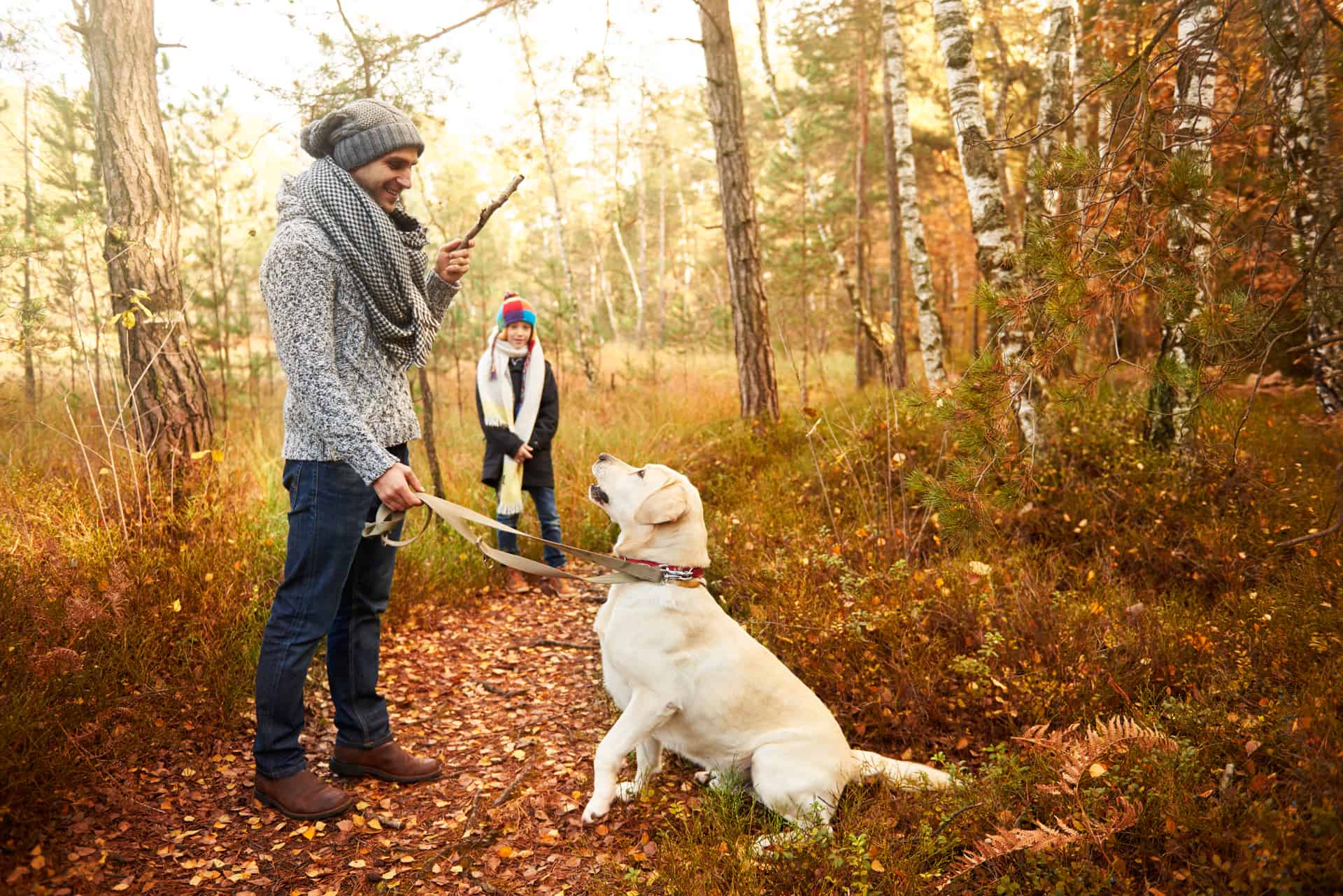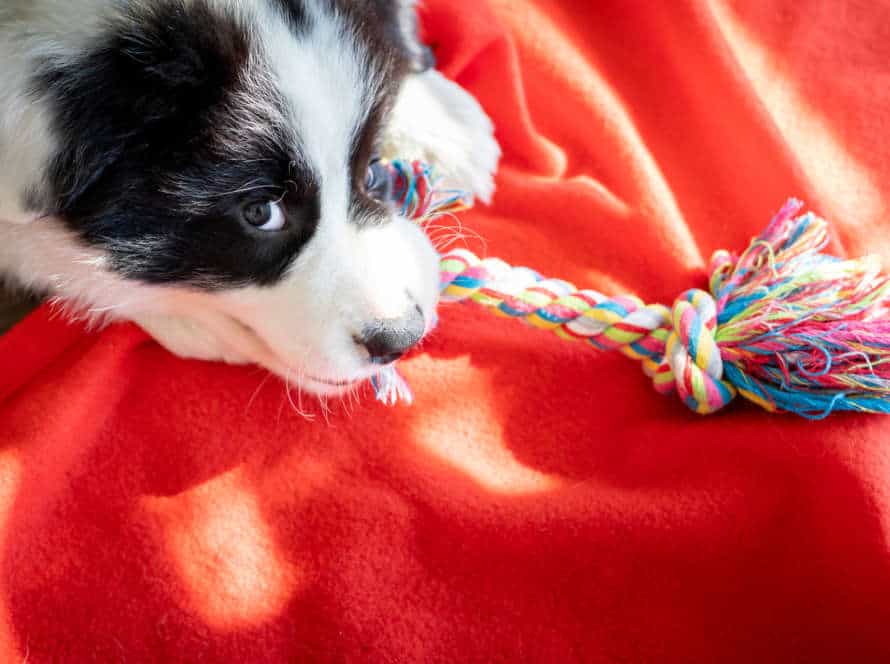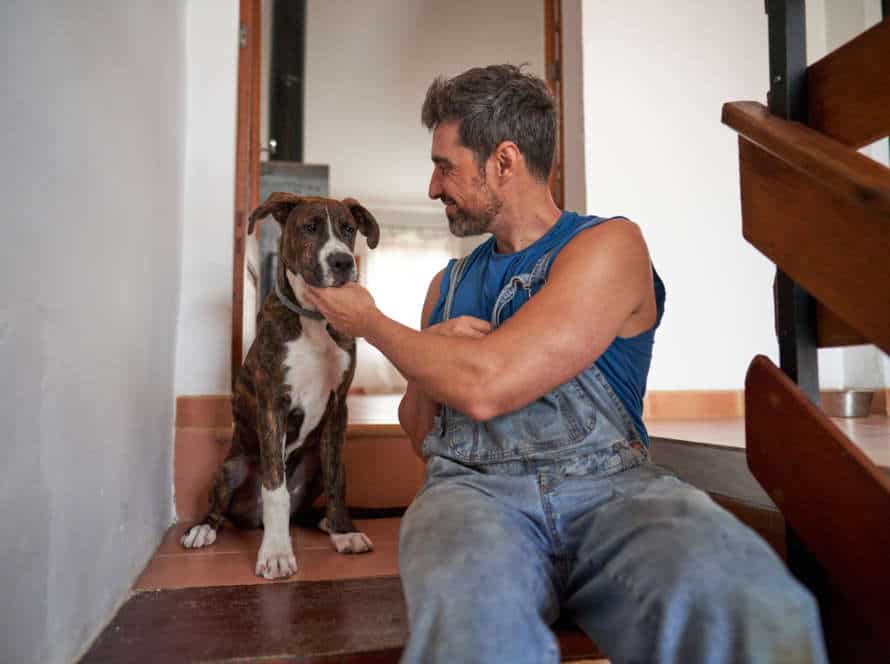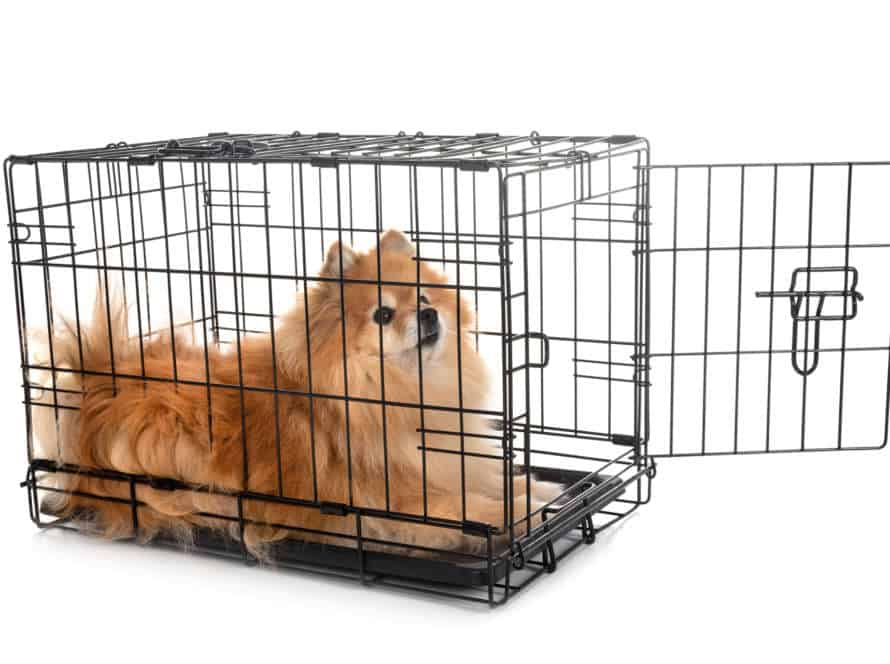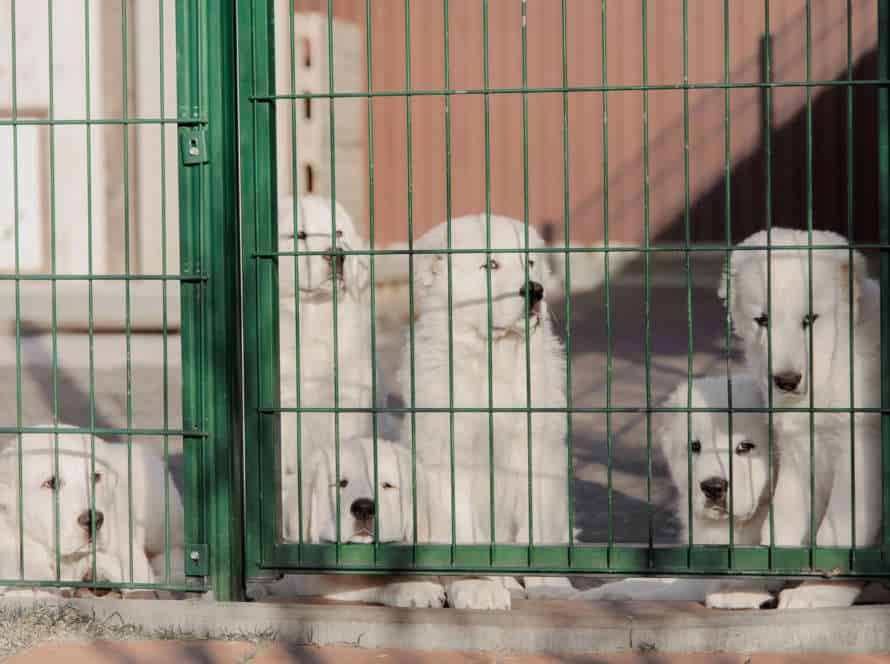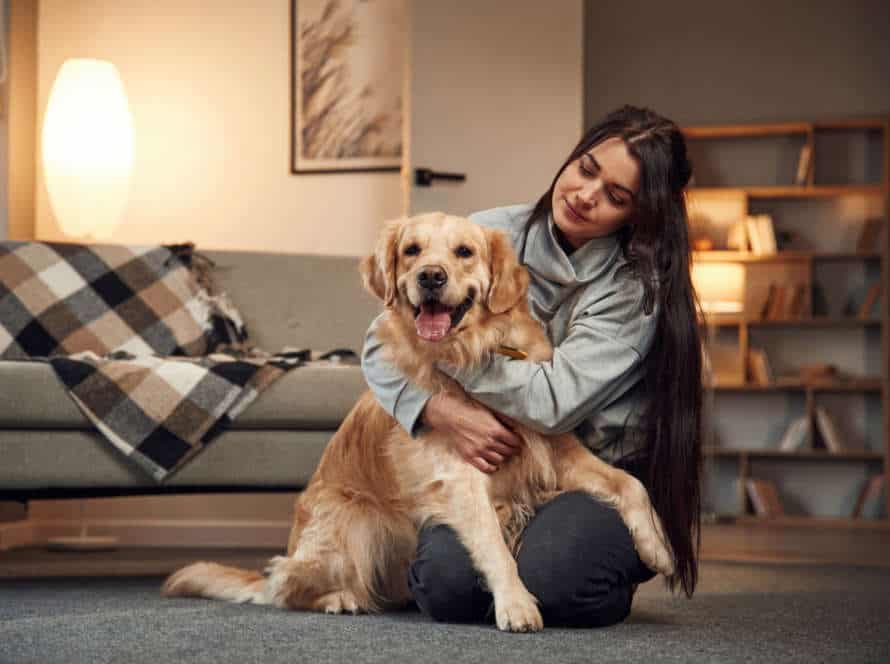How to Transition from Treats to Verbal Praise for the Sit Command
Transitioning from treats to verbal praise for the “sit” command? Patience and consistency are key! Here’s how to do it:
- Start by teaching your pup the “sit” command with treats.
- Once they know it, gradually reduce the treats and use verbal praise instead.
- Pick a consistent verbal cue, like “good sit” or “well done.”
- When they respond correctly, give them a treat as a reward sometimes.
- Over time, use fewer treats and more verbal praise until they respond to only verbal cues.
Keep in mind, consistency is crucial. It might take longer for some pups. Pro tip: Use a clicker with verbal cues to reinforce good behavior and eventually stop using treats.
Why transition from Treats to Verbal Praise for the Sit Command
Training your pup is key to having a good doggo! A common command to teach your pooch is “Sit“. Using treats as a positive reinforcement when teaching is popular. Yet, it is essential to transition from treats to verbal praises as the main form of positive reinforcement. Let’s explore why verbal praise is vital to use for the Sit command.
Understanding your Dog’s Behavior
It’s important to comprehend your pup’s conduct to have a great relationship. If you’ve been rewarding your pup with treats when they do the “sit” command, it’s time to switch to verbal praise.
Here’s how:
- Say the “sit” command like normal, but no treats.
- When your pup sits, give lots of verbal praise, e.g. “good boy/girl!” and pat them on the head.
- Do this a few times, so they learn verbal praise instead of treats.
- Decrease treats, and increase verbal cues until your pup responds to your verbal commands, not expecting treats.
Keep in mind, every dog is special and it’ll take some time to adjust. Have patience and consistency, and your pup will eventually learn to respond to your verbal cues.
Removing Dependencies on Treats
Treats for dogs are great for encouraging good behavior. But, they can become a crutch for your pooch. Here are a few reasons why verbal praise should replace treats when training them to sit:
- Too many treats can lead to health issues like obesity and diabetes.
- Treats can become less effective, so you need to use higher value ones.
- Verbal praise builds trust and strengthens the bond between you and your pup.
To transition to verbal praise for the sit command:
- Start by getting your dog’s attention. Give the verbal cue for sit with a hand gesture.
- When your dog sits, give enthusiastic verbal praise – “Good Boy!” or “Great Job!“.
- Practice this technique multiple times a day. Reduce the frequency of treats, and increase the use of verbal praise. Eventually, your dog will learn that praise is linked to the behavior of sitting, and will do it without expecting a treat!
Building a Stronger Bond with your Dog
Switching to verbal praise for the ‘sit’ command is a great way to strengthen your relationship with your pup. Plus, you won’t need to rely on food for reinforcement, which can make them gain weight, and they’ll be more likely to listen to your commands without treats.
Here’s how to transition:
- Start by using treats to teach them the command.
- When they’ve got it, give verbal praise like ‘good boy/girl‘ along with the treat.
- Now, gradually stop giving treats and only use verbal praise.
- Be consistent, use positive reinforcement, and soon your pup will respond to verbal praise alone – leading to an even better relationship!
Strategies to Transition from Treats to Verbal Praise
Treats can be great to teach your pup the ‘sit’ command. But, treats can’t do it all. To transition from treats to verbal praise, check out these tips.
- Firstly, use verbal praise after each successful sit command.
- Also, give fewer treats and reduce the size of the treats.
- Lastly, provide verbal praise when treats are not available. That way, your pup will learn to respond to verbal praise too.
By following these tips, you can train your furry friend to respond to both treats and verbal praise when practicing the ‘sit’ command.
Start with Fading out the Treats gradually
To transition from treats to verbal praise for the “sit” command, use these strategies.
- Gradually reduce treats. For instance, give them a treat every other time they obey the command, or switch to a lower value treat.
- Pair verbal praise with the command. This conditions your pet to respond to verbal praise instead of treats.
- Intermittently offer treats too.
Pro Tip: Choose a comfortable environment for your dog where they feel safe and can focus.
Train with an Empty Hand
Train your pup with an empty hand – it can be a great way to switch from treats to just verbal praise for the sit command. Here’s how:
- Start with a treat in your usual hand for the sit command.
- When your dog responds correctly, give them verbal praise and then a treat from your other hand.
- Lessen the treats and more of the verbal praise until your pup learns to obey your commands only through your words.
It may take time and patience, however with steady practice, your dog will learn to obey!
Use clicker Training as an Intermediary Step
Clicker training is a helpful way to transition from treats to verbal praise for the “sit” command in dogs. It can help your pup understand that a verbal cue is the same as a food reward.
Here’s how:
- Click the clicker and give a treat each time your dog sits when commanded.
- Once your dog knows the clicker means a treat, phase out the treats and use verbal praise instead.
- Say “sit” and click the clicker when your pup sits. Then give verbal praise and a pat on the head.
- Decrease the treats until your dog responds just to the verbal praise and physical affection.
- Keep sessions short (10 mins max) and positive. Always end when your dog succeeds at a command.
With patience and consistency, your dog will learn to sit when commanded, without requiring a treat.
Reinforcing Verbal Praise
Verbal praise is an old and significant part of positive dog training. It’s a great way to show your pooch you’re pleased with their behavior, and reinforce it. While treats can be useful for teaching a pup a new behavior, transitioning from treats to verbal praise is key for strengthening the desired behavior in the long run.
Here are some tips on transitioning from treats to verbal praise for the “sit” command:
Use High-Pitched Tone and Positive Body Language
Use a high-pitched tone and smile when praising your pup for the “sit” command. Offer positive body language, like a thumbs-up or a rub on the back.
Practice this command often!
Verbal praise should follow a successful sit.
Gradually decrease treats to reinforce verbal praise.
Keep training sessions short and end each one on a positive note. This will keep your pup motivated and learning!
Reward with Play and Cuddles
Switch up treats for verbal praise when teaching your dog to “sit” – it’ll reinforce their good behaviour. Playtime and cuddles are effective rewards. Here’s how:
- Say ‘good job!’ in a happy voice when your pup sits on command.
- Then, go for playtime or cuddle time to show your appreciation.
- Lessen treats and increase verbal/physical praise.
- Vary phrases and tone to keep it interesting.
- Eventually, your pup will sit without needing treats.
Tip- Each pup is different, so find what works for yours and stay consistent.
Keep your Dog Motivated by Varying Rewards
Keep your pup engaged and motivated during training by alternating the rewards. Start with treats for each “sit” command that your pup executes properly. When they have mastered the command, start swapping out treats for verbal praise like “well done!” or “good job!“. Alter the pitch and intonation of your words to keep your pup motivated. Don’t forget to offer occasional treats to keep them interested in the training. Eventually, they will link your verbal praise with positive reinforcement and stay as motivated as before!
Common mistakes to avoid when transitioning from Treats to Verbal Praise
Transitioning from treats to verbal praise for the ‘sit’ command is essential for any dog. It boosts your pet’s recall and obedience. But, there are a few common mistakes you should avoid. Let’s discuss what these errors are when transitioning from treats to verbal praise for the ‘sit’ command!
Being Inconsistent
It’s common to be inconsistent when transitioning from treats to verbal praise when teaching ‘sit’ commands to dogs. Here’s how to avoid it:
- Choose a command word, and use it consistently.
- Practice treats, verbal praise, and cuddles for a few weeks. Don’t go cold turkey on treats – reinforce the behaviour, not discourage it.
- Increase the duration of the behaviour.
- Reward with toys, cuddles, or belly rubs – keep it interesting and effective.
- Be consistent with verbal cues, be patient, and repeat. This’ll help transition to using verbal praise alone.
Empty Praise or Over-Praising
Transitioning from treats to verbal praise for the sit command? Avoid mistakes!
Empty praise is insincere, without enthusiasm. Like “good dog” in a monotone voice.
Over-praising is excessive and can confuse your dog. E.g. using an overly excited tone and repeating “good dog” multiple times.
To avoid: use genuine, enthusiastic tone when praising your pup. Keep it short & simple – “good girl!” or “nice sit!”
Also use a variety of rewards: verbal praise, physical affection, and occasional treats. Keep your pup motivated & engaged in training.
Timing and Pairing with Treats
Timing and pairing treats are important when transitioning from treats to vocal praise for the sit command with your pup.
Timing: Praise your pup straight away after they do the behavior you want. This will help them link the praise with their action and increase the chance of them doing it again.
Pairing with Treats: Start by praising your pup verbally while still giving a treat. After several successful reps, lessen the frequency of treats while keeping the verbal praise. This will help your pup realize that verbal praise is a reward for good behavior.
Common Mistakes to Avoid:
- Not giving treats or praise at all
- Praising your pup too early or late
- Using an excited voice only after the pup did the desired behavior, instead of during it.
Pro Tip: Be steadfast and patient with your training! It may take some time for your pup to understand the change, but with positive reinforcement and persistent training, they’ll get it!
Encouragement and Positive reinforcement Techniques to Master Sit Command with Verbal praise
Treats are a great way to get your pup learning the ‘sit’ command! But when your pooch has mastered it, it’s time to move away from treats. We’ll give you some tips for using positive reinforcement and verbal praise instead. Get ready to transition from treats to verbal praise for that ‘sit’ command!
Patience and Persistence
Patience and persistence are key when training your pooch to obey the sit command, using verbal praise instead of treats as a reward. Here are some tips for encouragement and reinforcement:
- Hold a treat close to your pup’s nose and lift it up and back – this should cause them to sit.
- Say “sit” in a clear and firm tone as they do so.
- Replace the treat with verbal praise and a gentle pat on the head once they sit on command.
- Be consistent and patient throughout the training process.
- Celebrate successes with lots of praise and a positive attitude.
By following these techniques, your pup will master the sit command and transition from treats to verbal praise.
Use Positive Reinforcements to Build Habits
Positive reinforcement is a great way to create habits, especially when teaching your pup commands. Time to give up treats and use verbal praise instead! Here’s how:
- Command your pup to “sit”.
- When they sit, use a verbal cue like “good pup” or “well done” with enthusiasm.
- Follow it up with a physical cue like a pat on the head or a belly rub.
- Slowly reduce the treats and replace them with more verbal praise and physical cues.
- Be consistent so your pup understands the connection between the behavior and reward.
Plus, positive reinforcement is all about praising good behavior, not scolding bad behavior. The more you reinforce good behavior, the more likely your pup will obey even in distracting situations.
Celebrate the achievements of your pet.
Celebrate your pet’s successes! Transitioning from treats to verbal praise can be tricky, but it’s necessary for obedience training. Follow these steps to switch from treats to verbal praise for the sit command:
- Start by using treats.
- Then, reduce the number of treats and use verbal praise too.
- As your pet gets better at sitting, make verbal praise the main reward.
Cheerfully say things like “good boy/girl” or “well done”!
Reward good behavior with petting, belly rubs, and playtime. Be consistent with your training and always use positive reinforcement. Celebrate achievements by praising your pet and making it a pleasant experience.
Frequently Asked Questions
1. Why is it important to transition from treats to verbal praise for the sit command?
It is important to transition from treats to verbal praise for the sit command because relying solely on treats can lead to an over-reliance on food rewards and may make it difficult for your dog to obey the sit command without them.
2. How do I begin transitioning from treats to verbal praise for the sit command?
You can begin transitioning from treats to verbal praise for the sit command by gradually decreasing the frequency of treats and increasing the frequency of verbal praise each time your dog sits on command.
3. Should I completely stop using treats for the sit command?
No, you don’t need to completely stop using treats for the sit command. Treats can still be used occasionally as a reward, but it is important to also incorporate verbal praise and other forms of rewards to reinforce the behavior.
4. What are some other forms of rewards that can be used to reinforce the sit command?
Other forms of rewards that can be used to reinforce the sit command include petting, playing with your dog, giving them a toy or a bone, or taking them for a walk. These rewards can be just as effective as treats as long as they are consistently used to reinforce the behavior.
5. What if my dog does not respond to verbal praise for the sit command?
If your dog does not respond to verbal praise for the sit command, it may be because they have not yet associated the verbal cue with the behavior. In this case, it is important to consistently use the verbal cue “sit” each time your dog sits on command, so they can begin to make the association between the behavior and the cue.
6. How long does it take to fully transition from treats to verbal praise for the sit command?
The length of time it takes to fully transition from treats to verbal praise for the sit command can vary depending on your dog’s individual temperament and level of training. However, with consistent and patient training, most dogs can learn to obey the sit command with verbal praise as the primary reward within a few weeks.

